PROFESSIONAL SERVICES
#1 Hydrogen Fuel Cell Supplier From China
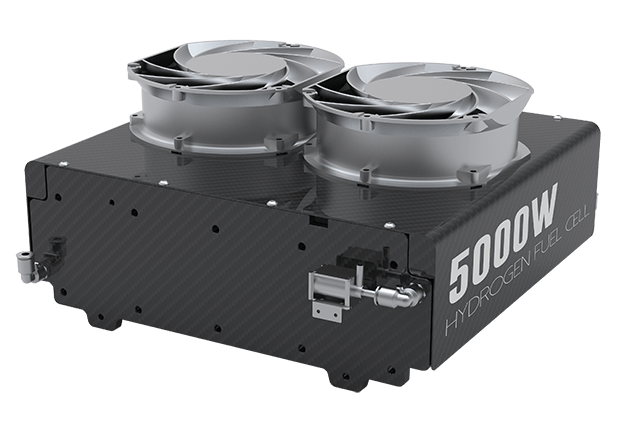
Our R&D team participated in the formulation of China's national standard GB/T 38954-2020 for hydrogen fuel cell power system for UAVs
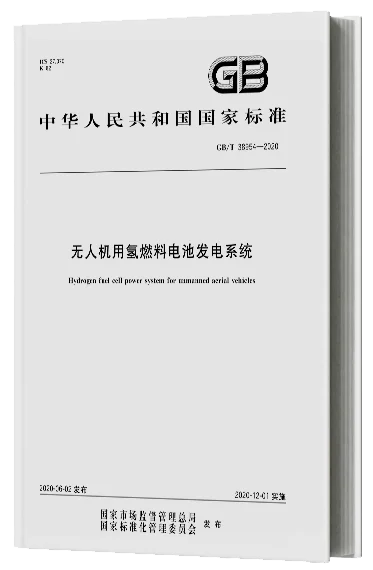
The standard was issued by the Standardization Administration of China (SAC) and jointly developed by industry experts, research institutes and key companies in the field of hydrogen fuel cells and UAVs. The standard covers key contents such as system composition, performance indicators, safety requirements and test methods . It is applicable to drones with a maximum take-off mass of no more than 150kg, providing an authoritative basis for the design, production and testing of hydrogen-powered UAVs.
Standard significance
As China’s first national standard for hydrogen fuel cell power generation system for UAVs , GB/T 38954-2020 fills the gap in technical specifications in this field, focusing on solving core challenges in the industry such as lightweight design and high energy density power systems . The implementation of this standard will:
-
Standardize industry development : unify technical requirements and testing methods, and promote collaborative innovation in the industry chain.
-
Promote the application of green energy : Help hydrogen-powered drones to be used commercially on a large scale in long-flight scenarios such as logistics and inspection.
-
Enhance international competitiveness : Align with global hydrogen energy standards (such as ISO/TC 197) and promote Chinese hydrogen energy technology to the world.
Our PRODUCTS
HYDROGEN FUEL CELLS
Built for endurance, safety, and efficiency, our hydrogen fuel cells power long-range UAV operations across sectors like energy and emergency response. Each unit is engineered for high energy density, quick refueling, and stable performance—even in extreme conditions.

Reduces payload stress and extends flight duration.
Proven performance in cold, high-altitude, and winter missions.
Delivers more power with less fuel—ideal for long-endurance operations.
Backed by extensive field data for dependable real-world use.
TYPICAL APPLICATIONS
Hydrogen-Powered Bikes
Hydrogen Surveillance Drones
Hydrogen Bus
Hydrogen Motorcycle
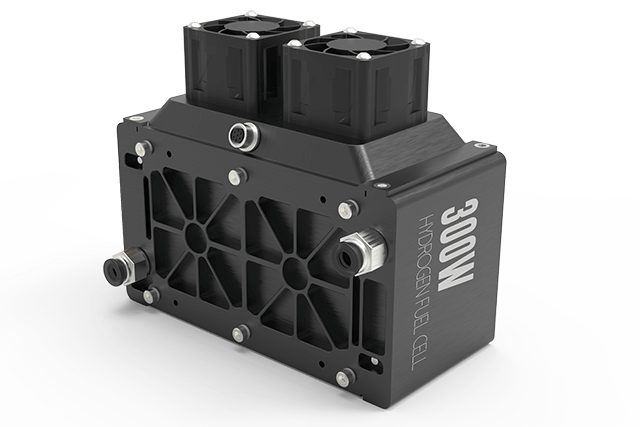
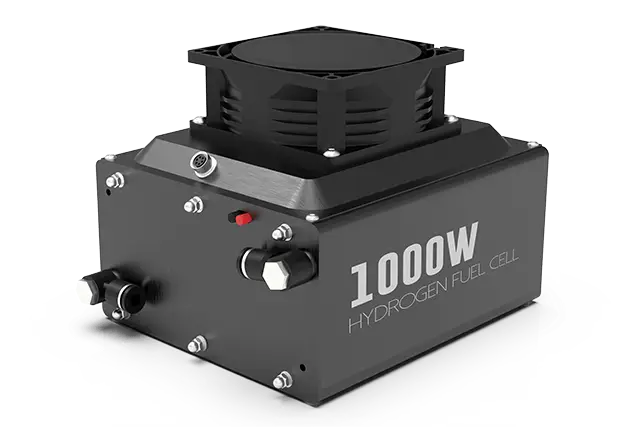
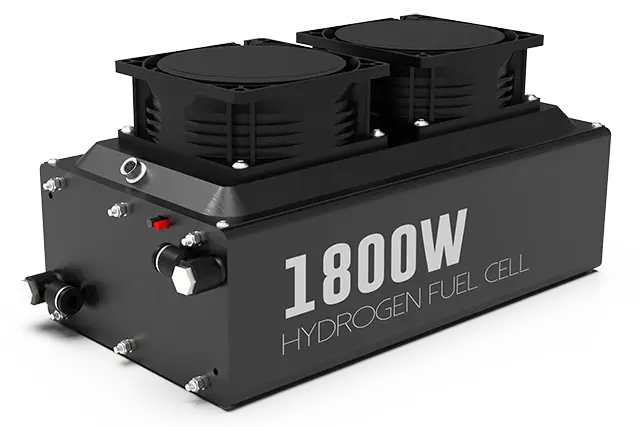
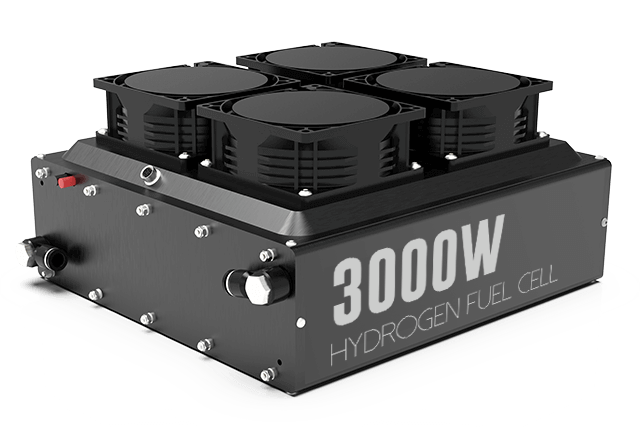
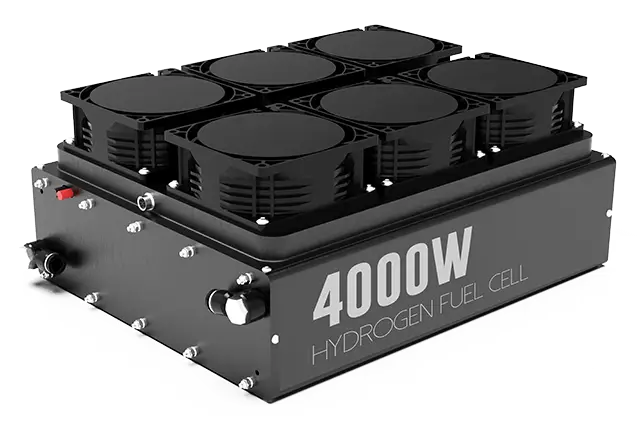

SPECIFICATIONS
| Stack Model | D5000 | D3000 | D1800 | C1500 | C1000 | B500 | B300 |
|---|---|---|---|---|---|---|---|
| Plan | 5kW/48V | 3kW/48V | 1.8kW/48V | 1.5kW/48V | 1kW/48V | 500W/36V | 300W/36V |
| Stack voltage/V | 48-80 | 48-80 | 49-82 | 24-40 | 30-50 | 15-25 | 9-15 |
| Stack power/W | 5500 | 3000 | 2050 | 1600 | 1200 | 600 | 350 |
| Stack weight/g | 8000 | 3600 | 2700 | 1900 | 1750 | 1500 | 760 |
| Stack size/mm | 338×263×151 | 260×240×130 | 266×142×127 | 140×240×130 | 160×142×127 | 89×142×127 | 60×142×117 |
| Control box model | ZH-4850 | ZH-4830 | ZH-4818 | ZH-4815 | ZH-4810 | ZH-3605 | ZH-3603 |
| System output voltage/V | 48 | 48-54 | 48-54 | / | 48-49.5 | 36 | 36 |
| System net output/W | 5000 | 2500 | 2000 | 1500 | 1000 | 500 | 300 |
| Control box weight/g | / | 900 | 600 | / | 600 | 600 | 600 |
| Control box size/mm | / | 203×130×60 | 190×115×25 | / | 223×75×60 | 165×84×60 | 165×84×60 |
| Lithium battery model | 12S | 12S | 12S | 12S | 12S | 4S | 4S |
Can’t Find the Specs You Need? No problem—we can customize for you.
Why Choose Us
Sure we build impressive
Proprietary membrane electrode and bipolar plate technology ensure lightweight durability and maximum power density. Backed by 20+ patents and full vertical integration, we provide end-to-end hydrogen aviation solutions for inspection, emergency response, and logistics.
Our PhD-led team combines aerospace engineering with electrochemistry expertise to push the boundaries of hydrogen aviation technology.
When failure isn’t an option, professionals choose Hydrogician fuel cells.
10+ years specializing in drone-optimized fuel cell systems with 20+ patents
Proprietary membrane electrodes deliver 4-5x lithium battery energy density
All systems undergo ballistic, fire and 150m drop certification testing
Pioneering portable hydrogen generation/refueling systems for field operations
Verified -40°C cold-start capability through Arctic field testing
Full control from membrane production to complete power system integration
WE'D LIKE TO SHARE
The Ultimate Guide to Hydrogen Fuel Cells
Hydrogen fuel cells are revolutionizing energy solutions with their high efficiency, long life cycles, and environmental benefits. At Feiliz Tech, we provide advanced fuel cell technology that powers everything from drones to industrial systems. With a focus on sustainability, our hydrogen fuel cells offer clean, reliable energy while significantly reducing carbon emissions. Available in customizable configurations, they are designed for integration into a wide range of applications, helping industries achieve energy efficiency and operational excellence.
Working Principle of Hydrogen Fuel Cells
Hydrogen fuel cells generate electricity through an electrochemical reaction between hydrogen and oxygen, producing water as the only byproduct. In this process, hydrogen gas is fed into the anode, where it splits into protons and electrons. The electrons travel through an external circuit, creating electrical current, while the protons move through the electrolyte to the cathode, where they combine with oxygen to form water. This clean, efficient process provides a reliable power source for a wide range of applications.

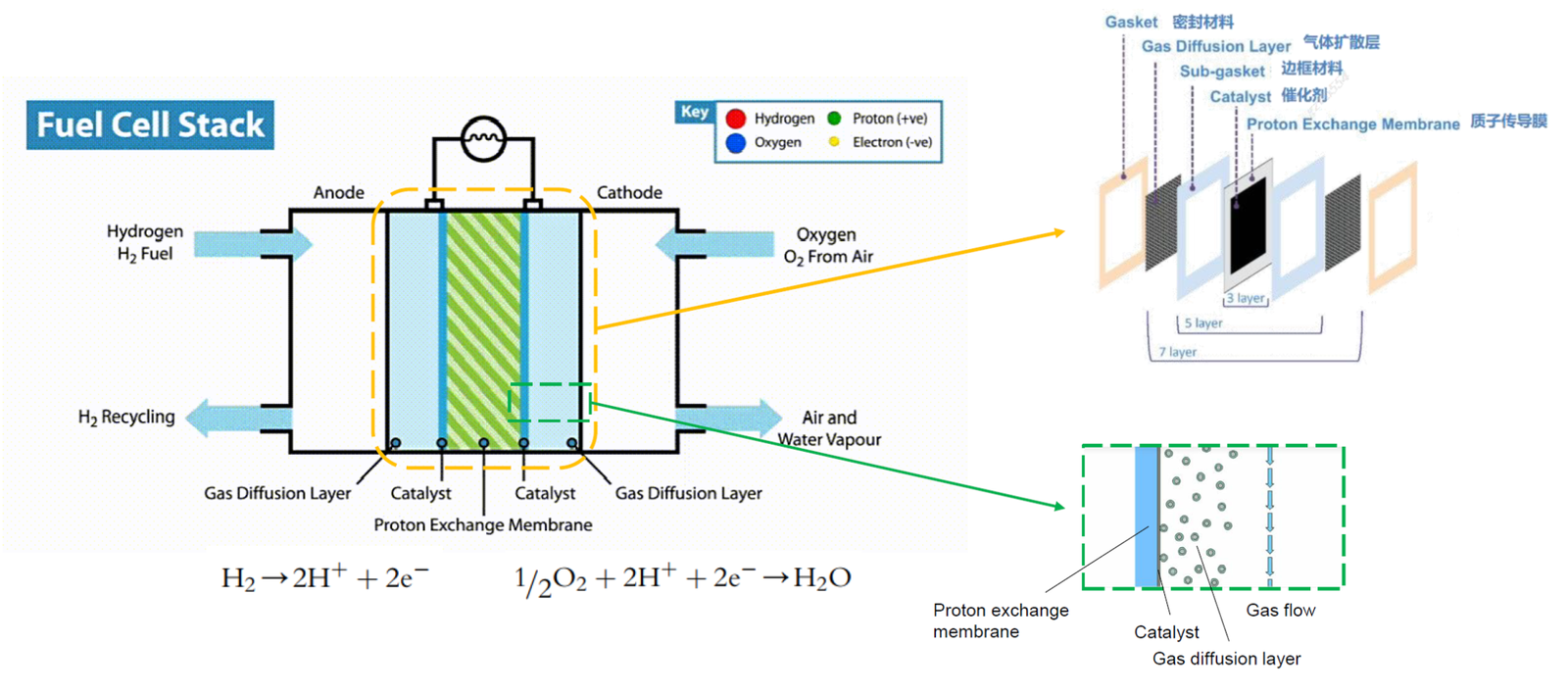
Safety of Hydrogen Energy
When properly handled according to safety regulations, hydrogen is significantly safer than flammable liquids like gasoline. Hydrogen is lighter than air, so it disperses quickly if released, reducing the risk of fire or explosion. Advanced safety systems in hydrogen fuel cells, including pressure relief devices and leak detection, further ensure safe operation across various applications, from transportation to industrial use.
| Parameter | Hydrogen (H₂) | Methane (CH₄) | Propane (C₃H₈) | Carbon Monoxide (CO) | Automobile Oil |
|---|---|---|---|---|---|
| Molecular Weight | 2.016 | 16 | 44 | 28 | – |
| Boiling Point (°C) | -252.8 | -161.5 | -42 | -197.4 | 30–225 |
| Density (kg/m³) | 0.0899 | 0.7168 | 2.005 | 1.25 | 0.71–0.73 |
| Ignition Temperature (°C) | 572 | 537 | 450 | 610 | 370 |
| Lower Explosive Limit (MJ·m⁻³/kg⁻¹) | 10.8 / 12.0 | 33.4 / 49.9 | 85.1 / 46.3 | 11.8 / 10 | 48.5 kJ/kg |
| Combustion Value (MJ/kg) | 0.2 | 9 | 3 | – | 9 |
| Combustion Range (% vol) | 4.3–74.2 | 4.7–15 | 2.1–9.5 | 12.5–74.2 | 1.4–7.5 |
| Flammable Gas Quantity (m³) | 0.017 | 0.28 | 0.25 | – | 0.2 |
| Flame Propagation Speed (m/s) | 2.8 | 0.38 | 0.43 | 0.56 | <5.0 |
Testimonials
What Our Clients Say?

Sumbit an Inquiry.
Whether you’re planning a pilot project or scaling operations, our team is here to support your hydrogen fuel cell needs. Reach out for technical consultations, custom solutions, or partnership opportunities.

